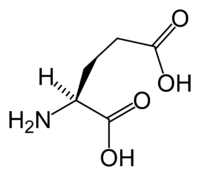
Photo from wikipedia
ABSTRACT Autism spectrum disorders (ASDs) are neurodevelopmental disorders with multiple genetic associations. Analysis of de novo mutations identified GRIN2B, which encodes the GluN2B subunit of NMDA receptors, as a gene… Click to show full abstract
ABSTRACT Autism spectrum disorders (ASDs) are neurodevelopmental disorders with multiple genetic associations. Analysis of de novo mutations identified GRIN2B, which encodes the GluN2B subunit of NMDA receptors, as a gene linked to ASDs with high probability. However, the mechanisms by which GRIN2B mutations contribute to ASD pathophysiology are not understood. Here, we investigated the cellular phenotypes induced by a human mutation that is predicted to truncate GluN2B within the extracellular loop. This mutation abolished NMDA-dependent Ca2+ influx. Mutant GluN2B co-assembled with GluN1 but was not trafficked to the cell surface or dendrites. When mutant GluN2B was expressed in developing cortical neurons, dendrites appeared underdeveloped, with shorter and fewer branches, while spine density was unaffected. Mutant dendritic arbors were often dysmorphic, displaying abnormal filopodial-like structures. Interestingly, dendrite maldevelopment appeared when mutant GluN2B was expressed on a wild-type background, reflecting the disease given that individuals are heterozygous for GRIN2B mutations. Restoring the fourth transmembrane domain and cytoplasmic tail did not rescue the phenotypes. Finally, abnormal development was not accompanied by reduced mTOR signaling. These data suggest that mutations in GluN2B contribute to ASD pathogenesis by disrupting dendrite development. Highlighted Article: GRIN2B mutations cause ASD, but the pathogenic mechanisms remained unknown. We show that ASD-specific GRIN2B mutations interfere with NMDA receptor trafficking and lead to reduced dendrite elongation and branching.
Journal Title: Journal of Cell Science
Year Published: 2019
Link to full text (if available)
Share on Social Media: Sign Up to like & get
recommendations!